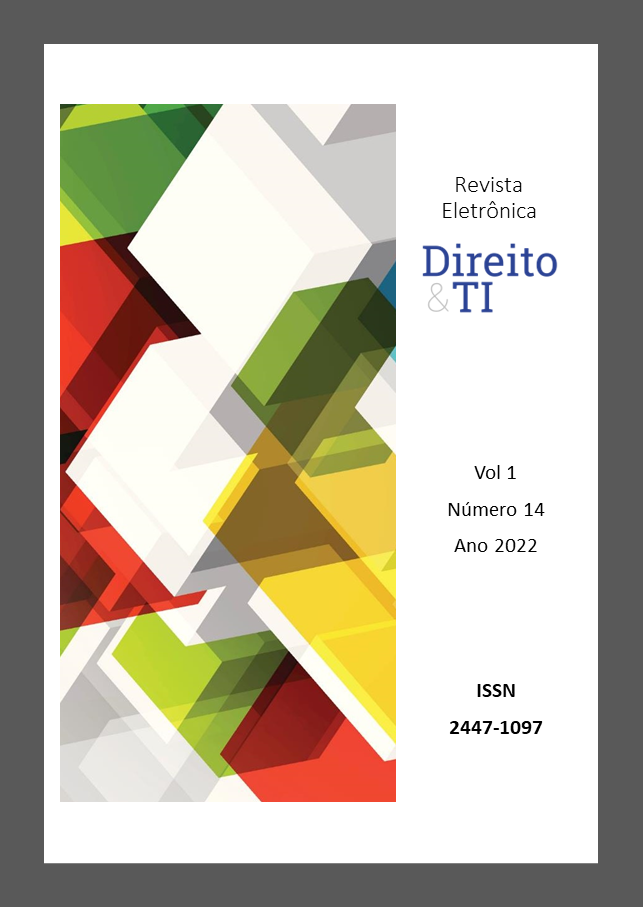Digital meta-evidence:
duality in the chain of custody involving electronic devices and digital evidence
DOI:
https://doi.org/10.63451/ti.v1i14.115Keywords:
Chain of Custody, Electronic devices, Digital Evidence, Digital Meta-Evidence, Digital ProofAbstract
Technology is increasingly present in our daily lives and it is no different in the legal environment. The increase in the amount of digital information stored in electronic devices is vertiginous, which are involved in investigative procedures, considered as digital evidence. They are documents, images, videos, audios, any type of information stored in binary format. In view of this, the present work aims to present the main characteristics that involve these files, and consequently their manipulation, with a focus on guaranteeing the integrity of their content. The study seeks to describe how digital evidence can and should be obtained and, mainly, considering the recent (2019) change in the Code of Criminal Procedure regarding the chain of custody, to present the concept that involves the duality of this chain of custody when the manipulation of digital evidence, considered meta-evidence, obtained from electronic devices which are intrinsically present in our society and, given their importance within procedural matters, must be handled correctly in order to maintain the validity of their probative value.
Downloads
References
ALVES, M. Como escrever teses e monografia: um roteiro passo a passo. Rio de Janeiro: Elsevier, 2007.
AVENA, Norberto Cláudio Pâncaro. Processo Penal / Norberto Avena . – 9ª ed. Rev. E atual. – Rio de Janeiro: Forense; São Paulo: Método, 2017.
CERVO, Amado Luiz. Metodologia científica. In Amado Luiz Cervo, Pedro Alcino Bervian, Roberto da Silva. -- 6. ed. --. São Paulo: Pearson Prentice Hall, 2007.
DONOHUE, Brian. Hash: o que são e como funcionam. Kaspersky Daily, 10/04/2014. Disponível em: https://www.kaspersky.com.br/blog/hash-o-que-sao-e-como-funcionam/2773/. Acesso: 19 set. 2022.
KIST, Dário José. A prova digital no processo penal. Leme: JH Mizuno, 2019.
LOPES JUNIOR, Aury. Direito Processual Penal. 14ª. ed. São Paulo: Saraiva, 2017.
MARCACINI, Augusto Tavares Rosa. O documento eletrônico como meio de prova. 1999. Disponível em: simagestao.com.br/wpcontent/uploads/2016/05/Odocumentoeletronicocomomeiodeprova.pdf. Acesso em: 26 abr. 2022.
MARQUES, Garcia; MARTINS, Lourenço. Direito da Informática. 2. ed. Coimbra: Almedina, 2006, p.76.
NATIONAL INSTITUTE STANDARDS AND TECHNOLOGY. Guide to integrating forensic techniques into incident response. NIST Special Publication 800-86. Gaithersburg: NIST, 2006. Disponível em: csrc.nist.gov/publications/detail/sp/800-86/final. Acesso em: 19 set. 2022.
PASTORE, Guilherme de Siqueira. Considerações sobre a autenticidade e a integridade da prova digital. Cadernos jurídicos / Escola Paulista da Magistratura. Imprenta: São Paulo, Escola Paulista da Magistratura, 2000. v. 21, n. 53, p. 63–79, jan./mar., 2020. Disponível em: bdjur.stj.jus.br/jspui/handle/2011/142286. Acesso em: 27 set. 2022.
PINHEIRO, Patricia Peck. Direito digital. 2ª. ed., 2ª. tir., rev. atual. ampl. São Paulo: Saraiva, 2008.
PINHEIRO, Patricia Peck. Direito digital — 5. ed. rev., atual. e ampl. de acordo com as Leis n. 12.735 e 12.737 de 2012 — São Paulo: Saraiva, 2013.
RINALDI, Luciano. Dos documentos eletrônicos (arts. 439 a 441). In: CABRAL, Antonio do Passo; CRAMER, Ronaldo (coord.). Comentários ao novo Código de Processo Civil. 2. ed. Rio de Janeiro: Forense, 2016.
VALENTE, Manuel Monteiro Guedes. Cadeia de custódia da prova. 2. ed. Coimbra: Almedina, 2020.






